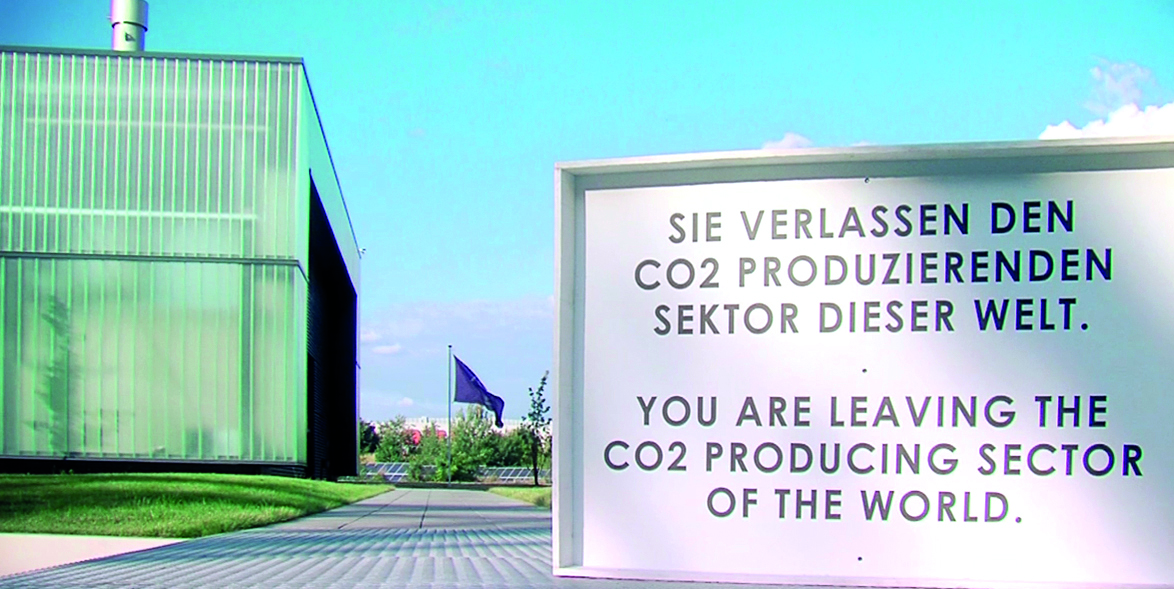
To mark the launch of the new-look Energy-Storage.News site, our team profile six of the leading global system integrators working in energy storage today. This is a handful of the names that are designing systems, solving problems, executing projects and shaping the industry around us. Written by: Andy Colthorpe, Tom Kenning, Danielle Ola, John Parnell, David Pratt and Liam Stoker.
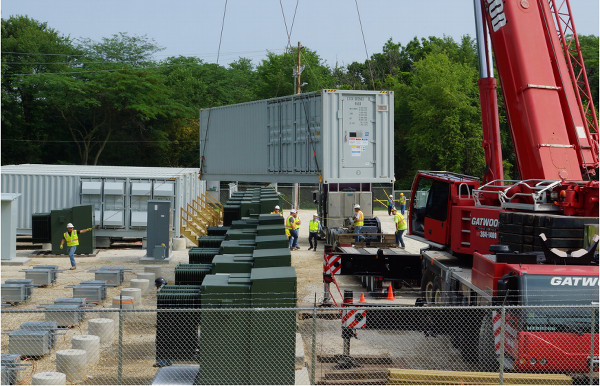
Renewable Energy Systems Group (RES)
With a history that stems back more than 25 years, Renewable Energy Systems Group – more commonly known as RES – lays claim to be the world’s largest independent renewables company. With 12GW of renewable generation under its portfolio and offices in 15 countries, its stated aim is to lead the global transition towards clean power generation and has placed an emphasis on wind, solar, storage and transmissions infrastructure. Revenues for the year ended 31 October 2015 amounted to £107.3 million, a staggering 131% year-on-year increase on the £46.4 million it recorded in 2014, however its operating loss also grew throughout the year as the group’s cost of sale proved prohibitive.
RES completed its maiden UK-based utility-scale storage facility last year, deploying a 300kW/640kWh BYD-developed battery on the site of a 1.5MW solar park in Copley Wood, Butleigh, constructed by UK solar stalwarts British Solar Renewables. RES acted as the EPC on behalf of local grid operator Western Power Distribution which used the battery and the solar farm it’s co-located with to deliver various ancillary services. It has been funded through the UK energy regulator Ofgem’s Network Innovation Allowance to test the commercial feasibility of similar co-located projects.
Try Premium for just $1
- Full premium access for the first month at only $1
- Converts to an annual rate after 30 days unless cancelled
- Cancel anytime during the trial period
Premium Benefits
- Expert industry analysis and interviews
- Digital access to PV Tech Power journal
- Exclusive event discounts
Or get the full Premium subscription right away
Or continue reading this article for free
RES also offers its ‘RESolve’ suite of operations and management tools to battery storage projects it develops, offering to optimise asset operation owing to particular performance parameters or revenue streams available. The software communicates with the battery via SCADA systems to optimise for separate load-shifting and frequency services, while also incorporating forecasted generation outputs when co-located with renewables.
To date, RES has developed more than 140MW/92MWh of battery storage projects in three countries including the UK, Germany and the US, which has seen the bulk of its storage deployment so far. The company has a further 200MW of battery storage in its pipeline, including several projects in the UK.
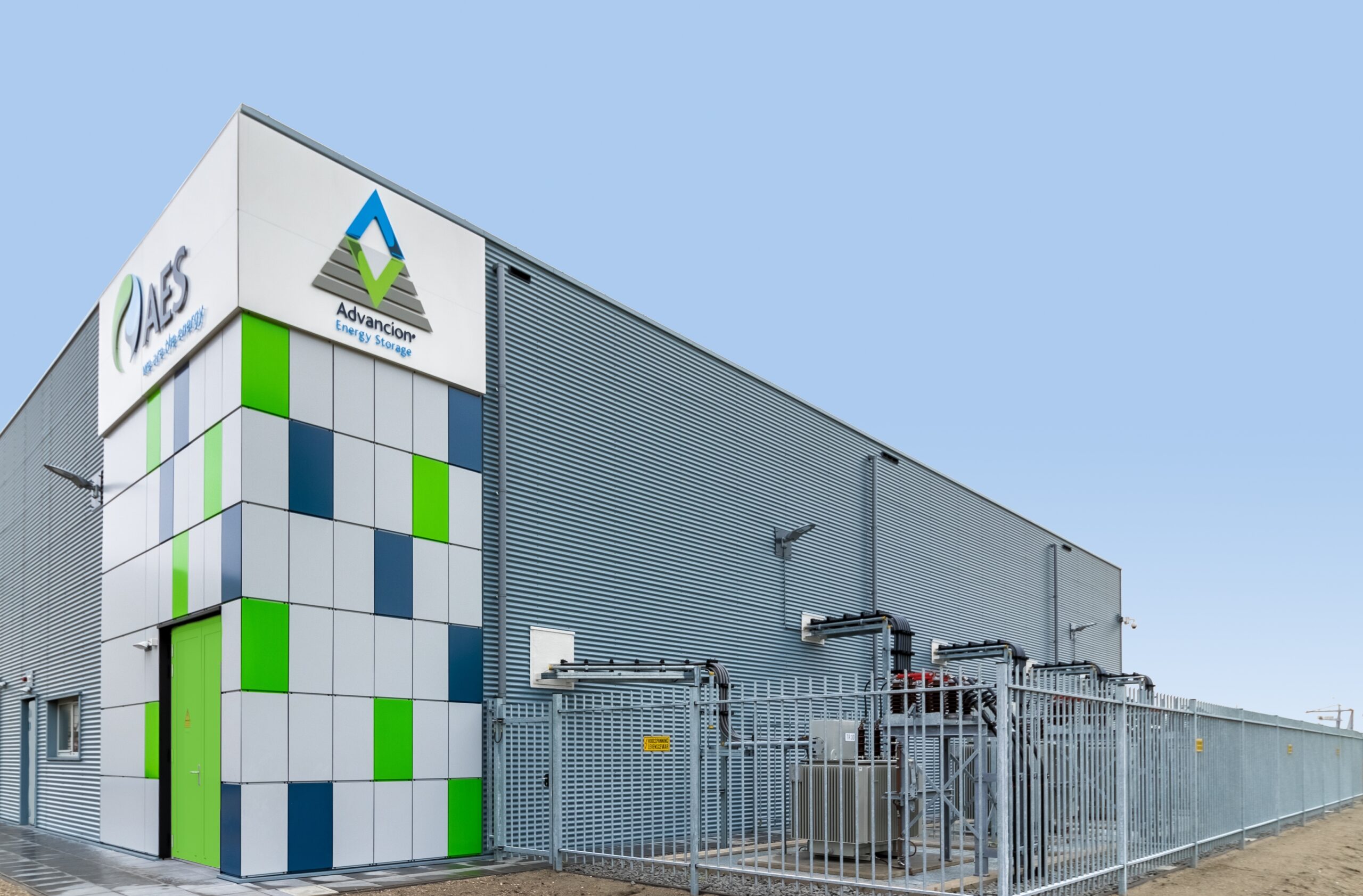
AES
Arlington, Virginia-based AES Energy Storage was founded in 2007 as a spin-off of the Fortune 200 global AES Corporation Group.
The company is a leader in commercial energy storage solutions and is most notably recognised by its Advancion 4 energy storage solution. In fact, AES was responsible for the first ever grid-scale advanced battery storage solution in commercial operations in 2007 and claims to operate the largest fleet of battery assets in service today.
AES has a total install capacity of 432MW of interconnected energy storage. To date, the company has invested more than US$150 million in development and its commercial facilities.
Timeline of achievements:
- Indiana, 2007 – AES introduced the first grid-connected lithium-ion batteries
- PJM, 2008 – AES introduced the first grid battery compensated within a power market
- New York, 2009 – AES introduced the first battery qualified as a generator by the Federal Energy Regulatory Commission (FERC)
- West Virginia, 2011 – AES received the first storage private letter ruling to allow it to be paired with renewable generation under the ITC
- Chile, 2012 – AES was the vendor for the first lithium-ion battery project financed with a power station
- California, 2014 – AES secured the first long-term PPA for a grid battery
- Philippines, 2015 – AES breaks ground on the country’s first ever battery-based energy storage facility
- Northern Ireland, 2016 – AES completed the UK’s biggest battery-based energy storage array
The company attributes a key cause of its success to the fact that they view building a strong ecosystem of partnerships as pivotal to driving the industry forward. Similar to many battery service providers, AES does not make its own batteries, but rather buys whichever batteries it thinks will work best for a certain project. In addition, the company cites access to a large volume of components, competitive pricing and standardization as three critical elements that enable it to consistently deliver large-scale energy storage installations and manage costs for customers.
Case study: AES and energy storage’s rapid response
After the California Public Utilities Commission issued a moratorium on gas injections at the Aliso Canyon Natural Gas Storage Facility after a four-month long methane leak caused power outage concerns, CPUC also issued a landmark resolution for the procurement of energy storage.
In an unprecedented move, Resolution E-4791 gave energy storage vendors just seven months to bring projects online.
“This is definitely one of the fastest issued resolutions, but then desperate times call for desperate measures,” Ravi Manghani, director of energy storage at GTM Research told Energy-Storage.News at the time. GTM also anticipated that vendors who were to participate in the tender would bring online 104.5MW of storage between them.
AES signed an agreement with San Diego Gas & Electric to bring online 37.5MW of storage, constituting the largest battery-based storage project in the US.
The company will deploy its Advancion 4 storage systems at two substations in San Diego, California; with 30MW in Escondido and 7.5MW in El Cajon. The Advancion arrays will be able to provide 37.5MW of power for four continuous hours and serve as a 75MW of flexible resource to the grid. The systems will include batteries by Samsung SDI and power conversion systems by Parker Hannifin, and will be operational shortly this year.
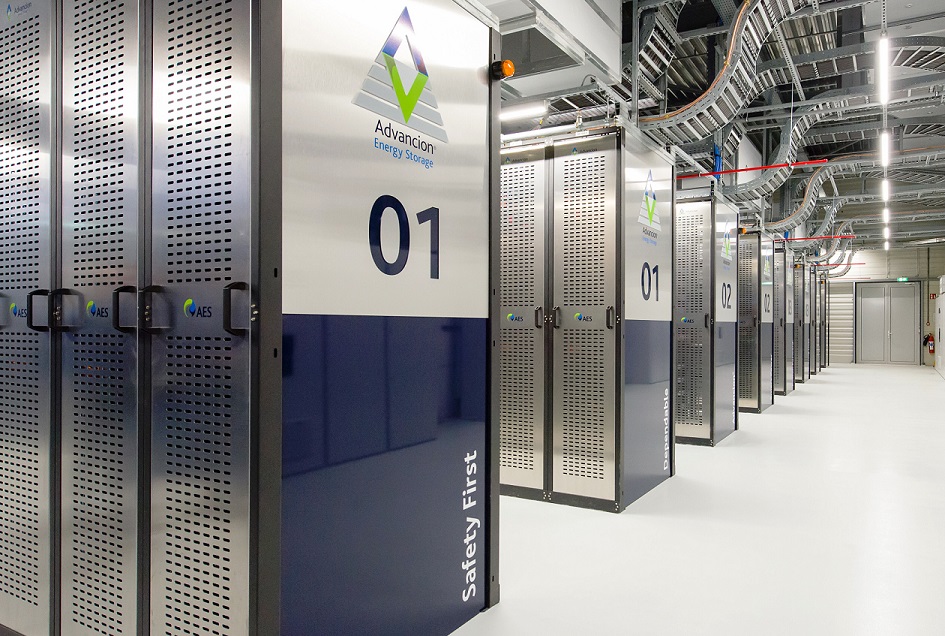
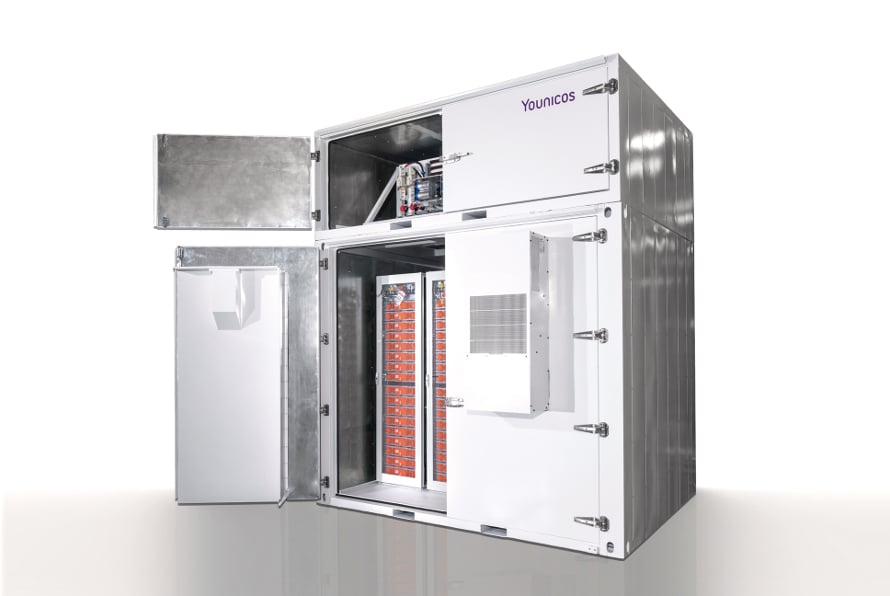
Younicos
With the corporate slogan “Let the fossils rest in peace” and a sign at their headquarters informing visitors that they are “…leaving the CO2 producing sector of the world”, Younicos is explicit in its intentions but has never let idealism prevent it from also being a serious business entity.
The company’s track record has included Europe’s first ‘commercial battery park’, a 5MWh grid-balancing system for WEMAG in Germany, which is now being tripled to 14.5MWh after first going online in late 2014. At the end of 2015, Younicos landed a US$50 million investment from a group that included vertically integrated utility-scale thin-film PV provider First Solar, which was used to fuel the storage integrator’s ongoing expansion.
Then last year, over 75MW of contracts were awarded to the US-German company, including a 49MW battery storage system in the UK for utility giant Centrica, meaning Younicos now has 200MW completed or under construction and a claimed 1.2GW pipeline over the next two years.
“I’m most pleased by the fact that we continue to lead the industry as battery storage moves beyond grid-scale use cases to now be embraced by downstream energy users, such as commercial and industrial (C&I) clients,” CEO Stephen Prince, who joined the company at the beginning of 2016, said at the end of last year.
One of the earliest to recognise the importance of revenue stacking, using battery systems for multiple applications and therefore multiple value streams, Younicos has also been involved in a range of island grid projects, with perhaps the most celebrated a ‘grid-forming’ multi-megawatt installation on the Portugese territory of Graciosa that reduces the island population’s reliance on diesel by two-thirds.
In addition to its project work, the company also launched its own range of energy storage hardware, power converter unit and a standalone, easily deployable storage solution called the YCube. Connecting a power conversion system (PCS) with lithium-ion battery blocks, the system is an attempt to produce equipment designed specifically for large-scale and commercial energy storage, as opposed to the use of power conversion and other equipment from other industries adapted for use.
NEC ES
Massachusetts-headquartered energy storage developer and manufacturer NEC Energy Solutions has around 250MW of storage systems installed, under construction, or in the contracting phase around the world.
Out of this capacity, the subsidiary of Japanese IT and network integration firm NEC Corporation, has now installed and commissioned around 120MW of grid-scale energy storage (GSS) installations delivering services such as peak shaving, renewables integration, frequency response, frequency regulation and voltage regulation across Europe, Asia and South America.
The company provided major utility Southern California Edison (SCE) with its first grid energy storage pilot system under a procurement programme established in 2015. It allowed SCE to employ energy storage with a variety of features and configurations on-demand and could be installed almost anywhere across the state to support its pilot programmes.
NEC’s first storage deployment was a system of 2MW/0.5MWh ratings installed at Huntington Beach, California, in September 2008, while its largest installed system to date stands at 32MW/8MWh in Elkins, West Virginia.
The firm also develops and manufactures advanced batteries for electric grid, backup power and lead-acid replacement applications. Its products range from 12V-1,000V batteries to utility-scale storage systems.
NEC also provides a Distributed Storage Solution (DSS) enabling advanced energy management and resiliency services for commercial and industrial customers and the utilities that serve them. The technology comes with lithium-ion battery storage and power conversion along with controls software, all available in a range of scales for both in-front-of or behind-the-meter applications.
The product for sub-1MWh applications will help companies expand their portfolio through energy storage at the edge of grid, but it removes the technology risk by providing guarantees and 10-year warranties backed by a global Fortune 500 company, says Roger Lin, marketing director at NEC Energy Solutions. The solution also aims to simplify the deployment of energy storage-based services.
NEC Energy Solutions Global utility-scale projects
| Country | Number of projects |
|---|---|
| USA | 11 |
| Chile | 2 |
| Denmark | 2 |
| UK | 6 |
| China | 2 |
| Spain | 1 |
| Italy | 3 |
| Japan | 2 |
| Germany | 1 |
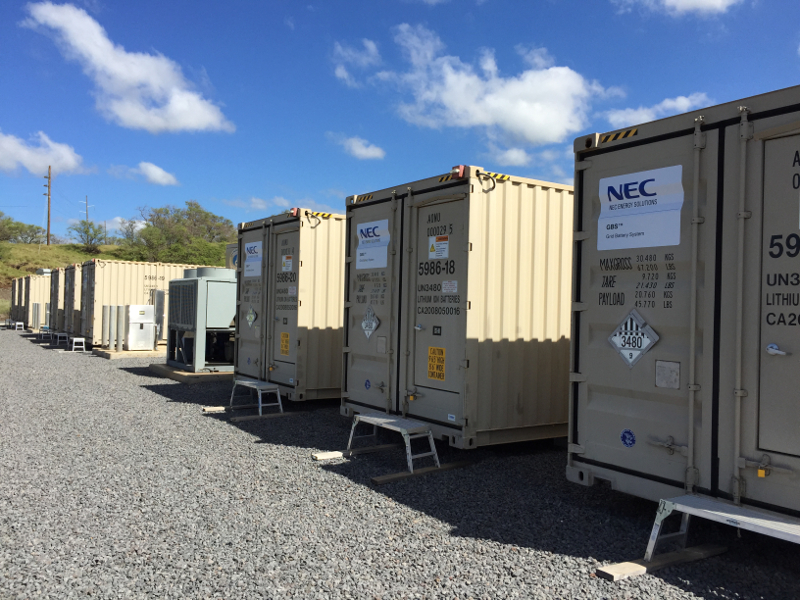
Case study: Massachusetts’ first utility-scale storage project
NEC Energy Solutions installed what was once the largest energy storage project in New England for the Sterling municipal town utility in 2016, standing at 2MW/3.9MWh.
“It is performing transmission charge reduction, which is an electricity bill savings type of application,” says Roger Lin, marketing director at NEC Energy Solutions. “When the power goes out in the event of an outage, then the system will provide backup power to critical town facilities such as the police station and dispatch centre for up to 12 days, so it has dual function.”
The Sterling Municipal Light Department (SMLD) also has 3MW of solar PV installed, so the storage system can add more resiliencies while integrating this solar generation to the grid.
As the first utility-scale energy storage project in Massachusetts, US, it also helps the town to save on energy costs over the project’s lifespan, with its grid services expected to result in a payback of installed costs in less than seven years.
The US$2.7 million battery storage system will support the utility’s distribution system on a daily basis, which will provide economic returns to the utility and ratepayers.
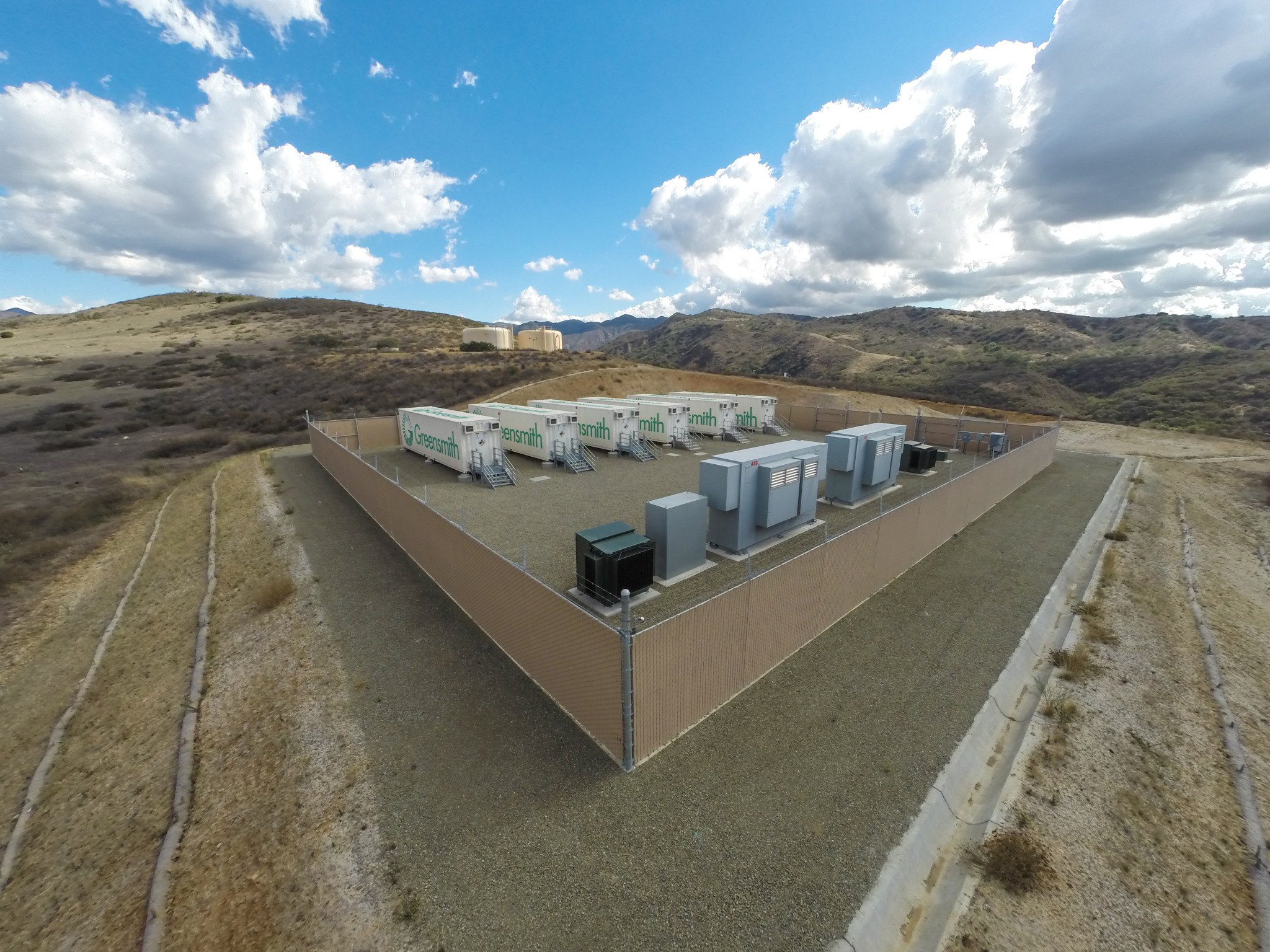
Greensmith Energy
The US firm has installed almost 200MW of energy storage since its inception in 2008. The lion share are in its domestic market with a handful over the border in neighbouring Canada and a double digit number of installs in Australia.
Greensmith was among the firms to deliver projects at breakneck speed in response to the Aliso Canyon gas leak and the urgent tender that followed. The design, integration and installation of the 20MW/80MWh energy storage system took less than four months.
Of the more than 180MW installed by the company, 130MW was completed in 2016, an indication of the sector, and the company’s current trajectory.
“There’s no question 2016 was another record-setting year for Greensmith and the energy storage industry as a whole, particularly from a grid-scale perspective,” said John Jung, president & CEO of Greensmith Energy. “As the industry begins to grow and expand, Greensmith has seen rapid transition from test systems and pilots to bankability and ROI over the past eight years. As perhaps the largest provider of energy storage software and turn-key systems to some of the largest power companies in the world, coupled with tier one battery and PCS vendor relationships globally – Greensmith enjoys a holistic view of the entire market.”
The system integrator is also a major provider of software solutions to third-party projects and in early 2017, had its GEMS management software installed at the Oncor microgrid project in Texas, a lighthouse project for the whole industry.
Greensmith in numbers
16 The number of batteries the company has experience working with
14 The number of inverters the company has experience working with
1 The company’s claimed market position
180MW Greensmith’s total installed capacity
1/3 The proportion of energy storage in the US delivered by Greensmith in 2014
4 The number of months needed to install a 20MW/80MWh system in California
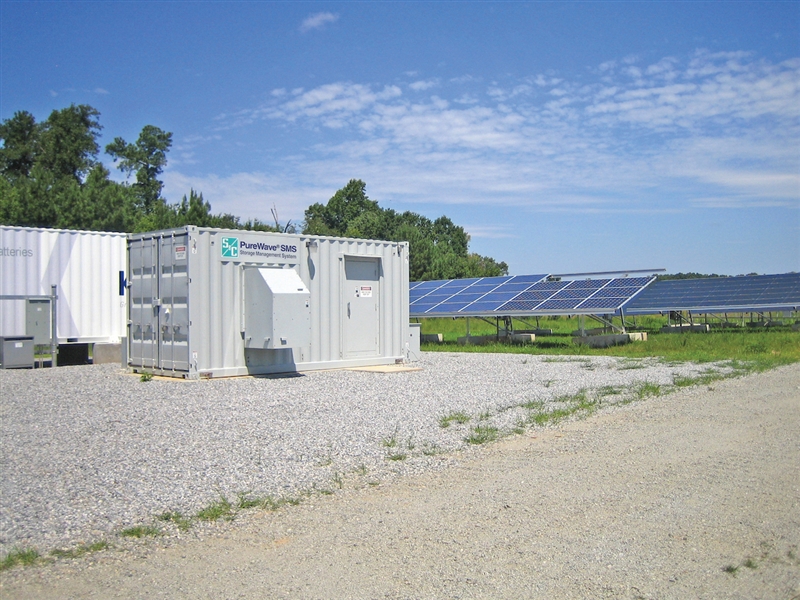
S&C Electric
Founded in Chicago in 1911, S&C Electric Company has a long history of providing system integration services across a range of electric power systems. It began working with energy storage more than a decade ago and now has 189 MWh of battery storage projects worldwide.
Its three core products offer scalable energy storage products for a number of applications, including what is thought to have been the US’ first and largest solar storage project to stack revenue streams and build the case for storage.
S&C’s 7MW PureWave SMS Storage Management System was used to provide fully integrated storage management and power conversion for 3MWh of lithium ion-batteries, connected to Half Moon Ventures’ (HMV) 4.2MW solar plant at the Village of Minster in Ohio.
It allowed HMV to bid into the PJM frequency regulation market, providing grid reliability for more than 60 million customers, while Minster was able to defer $350,000 of transmission and distribution costs. The award-winning project also provides backup power and shaves the peak demand of the village.
The company is also heavily involved in the development of micro-grids and off grid technologies. Past projects. This includes upgrading Santa Rita Jail near San Francisco to a fully functioning micro-grid using onsite generation; an advanced micro-grid in Texas for utility Oncor and its 10 million Texan customers; and using the off-grid technologies to bring power to two schools in Zambia.
Last year S&C acquired all outstanding common shares of intelligent microgrid control systems company IPERC to help it continue this work.
Engineers at S&C’s Europe, Middle East, and Africa business unit are based locally in the UK, with vital system parts stored centrally. S&C says this helps it maintain system uptime of greater than 98% and deliver a high standard of service for its customers.
S&C on the Aliso Canyon leak and expedited storage projects
2016 proved to be a significant year for energy storage across a range of markets, both in terms of deployment and ambition. This was exemplified in particular by the response in California to the Aliso Canyon gas leak, one of the largest in US history, which prompted the deployment of around 100MW of energy storage in less than six months.
The scale and speed of this build out proved that storage could be brought into the mainstream to offset the need for peaking gas generation as Troy Miller, director of grid Solutions at S&C Electric Company, explained.
“If you look at California and all the storage going in there to offset the Aliso Canyon gas leak, it can get sited a lot quicker, it can get built a lot quicker and it is taking care of a problem with peak load production, basically supplementing production on the peak days next summer,” he said.
